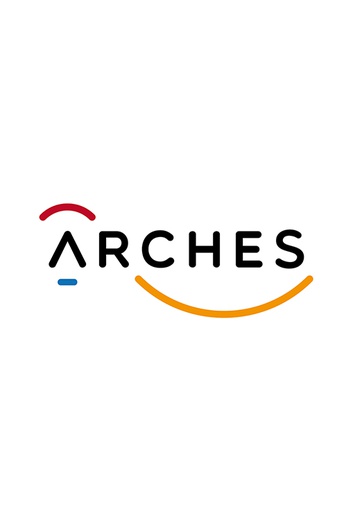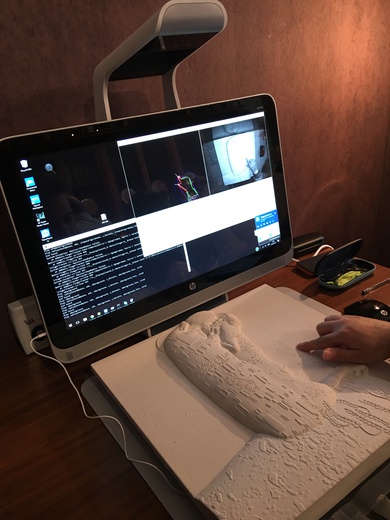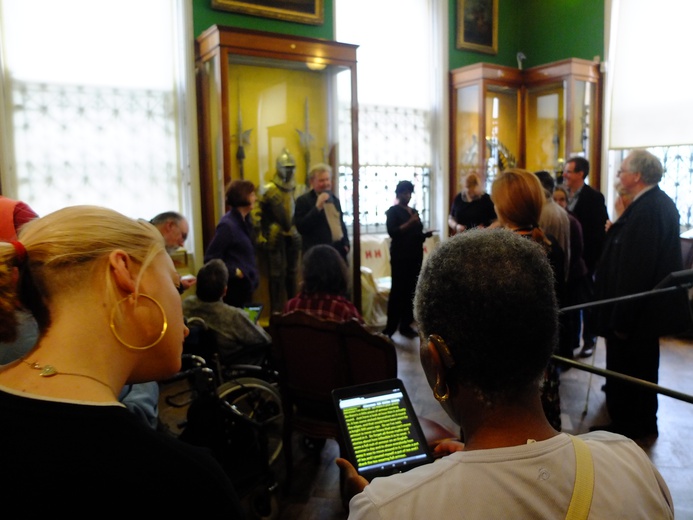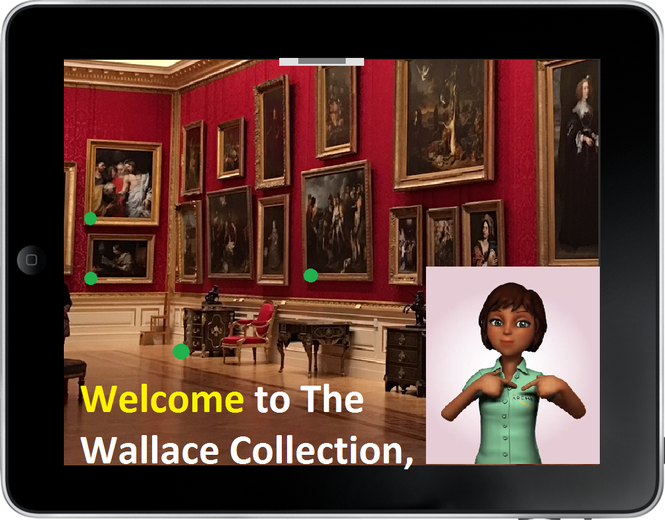Tech Project
Description of the challenges faced by the Tech Project
The ARCHES project is working with people who have differences and difficulties associated with perception, memory, cognition and communication to develop applications, online platform and multisensory technology to enhance museum accessibility. We met weekly at the V&A and Wallace Museums in London and next year will also work with museums in Vienna, Madrid and Oviedo. The members of our participatory research groups have the full gamut of access needs and intellectual/sensory impairments. The London Exploration Group have identified a key challenge for ARCHES to be the need to develop creative interpretation. They want to move beyond the limited opportunities provided by current models of access, so they transcend the delivery of information to encapsulate the spirit of an artwork and its space within the museum. They are seeking to transform the technologies so that the interpretation becomes artwork and access is no longer additional but integral to the museum visit.
Brief description of technology
ARCHES will bring together several technologies, including an accessible software platform, a set of applications for handheld devices and on-site multisensory activities. They will be developed in parallel with the exploration sessions organised at the museums so that the feedback from the exploration groups can be incorporated to the final versions. Accessible software platform: Image processing functionalities such as zoom, colour inversion, contrast enhancement, photonegative; integration of digital cultural heritage resources from external sources; search engine to find similar works on the Internet; automatic generation of descriptions based on metadata; social network interaction. Applications for handheld devices: Functionalities such as text-to-speech conversion for artefact descriptions using Augmented Reality; avatar technology supporting those who use forms of sign language; QR codes to obtain complementary information on the artworks adapted to the user’s profile: assisted indoor guidance. ‘Our story’ app to create a story/video from photos and share the experience. Multisensory activities: Touchable reliefs from two-dimensional images like paintings/photos; relief printer inspired by the pin art toy; and a context-sensitive tactile audio guide that provides help in the tactile and autonomous exploration.
What the project is looking to gain from the collaboration and what kind of artist would be suitable
As individuals our participants have hugely diverse skills, backgrounds and experiences, yet collectively we represent the totality of impairment. To respond to this rich and varied situation we must collectively offer stimulation yet solitude and calm, simplicity for some and complexity for others, whilst recognising that no single sense can be relied upon and no single solution will be enough. The Artist we seek must be profoundly excited by working in a multimodal, multisensory and participatory way to engage with our diversity. They need to be able to inspire, share, listen and respond using a wide range of sensory and conceptual approaches. They must work in a tactile way (perhaps seeking to use light and colour, sounds, smells and tastes as they explore both the material of the museum and the technology of the project) recognising the need for ideas to be both provocative, evocative and readily understood.
Resources available to the artist
We could offer an artist workspace in Vienna, with access to VrVis’ Interactive Audio Guide and the model-maker workshop at the Technical University Vienna, plus office space at the Open University in Milton Keynes. There is also access to the V&A, Wallace Collection and Thyssen-Bornemisza Museums, with technology partners Treelogic in Oviedo providing additional office space and access to a diverse range of software and hardware. Funds are available to facilitate participatory ways of working and transporting participants to enable this. All our partners are close to airports and mainline rail and general transport links.





